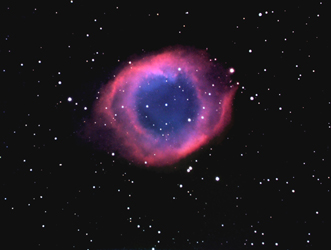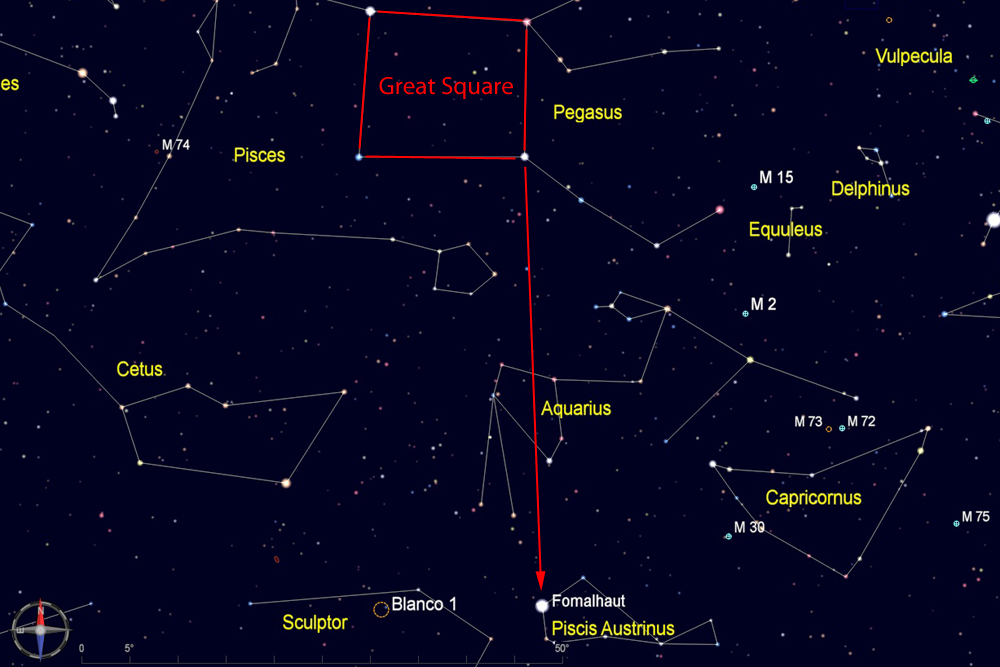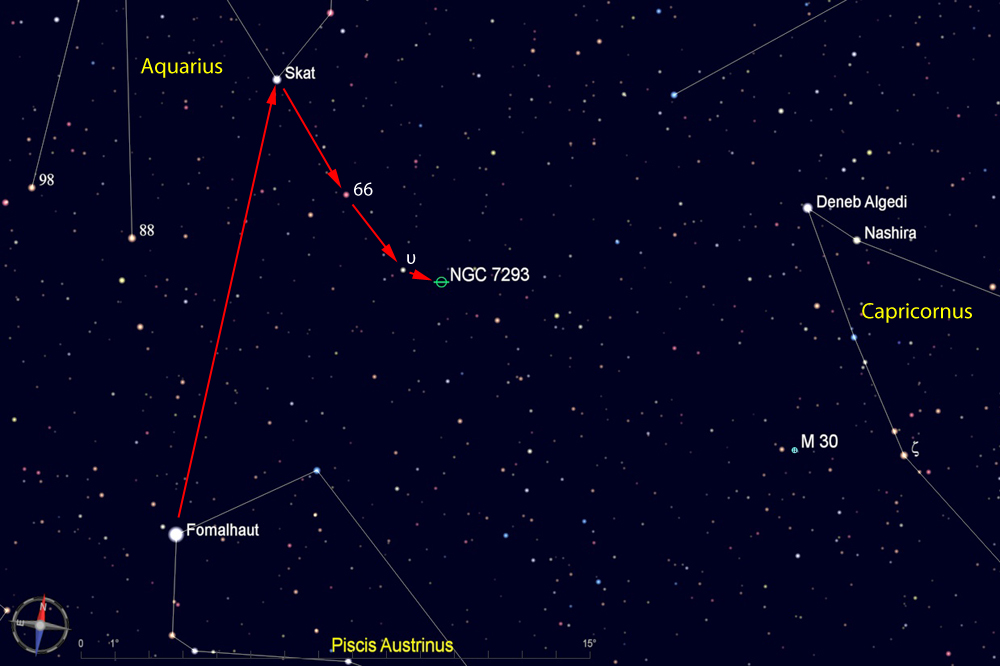
Start by finding the Great Square of Pegasus, which rises in the eastern sky during the early fall evenings, is high overhead later in the fall, and sinks in the western sky during early winter.
Using the western edge of the Great Square as a pointer, extend a line to the south about 3 times the size of the Square, and you will arrive at bright Fomalhaut, the only first magnitude star in that region of the sky.

From Fomalhaut, backtrack about 10 degrees to the north to find the star Skat, magnitude 3.3. Then follow a trail of dimmer stars to the southwest, including a 4-degree hop to the reddish star 66 Aquarii (magnitude 4.7) and a 3-degree hop to Upsilon (υ) Aquarii (magnitude 5.2), both of which should be easily visible in binoculars or a finderscope. From υ, it is just a 1-degree hop to the Helix Nebula.
